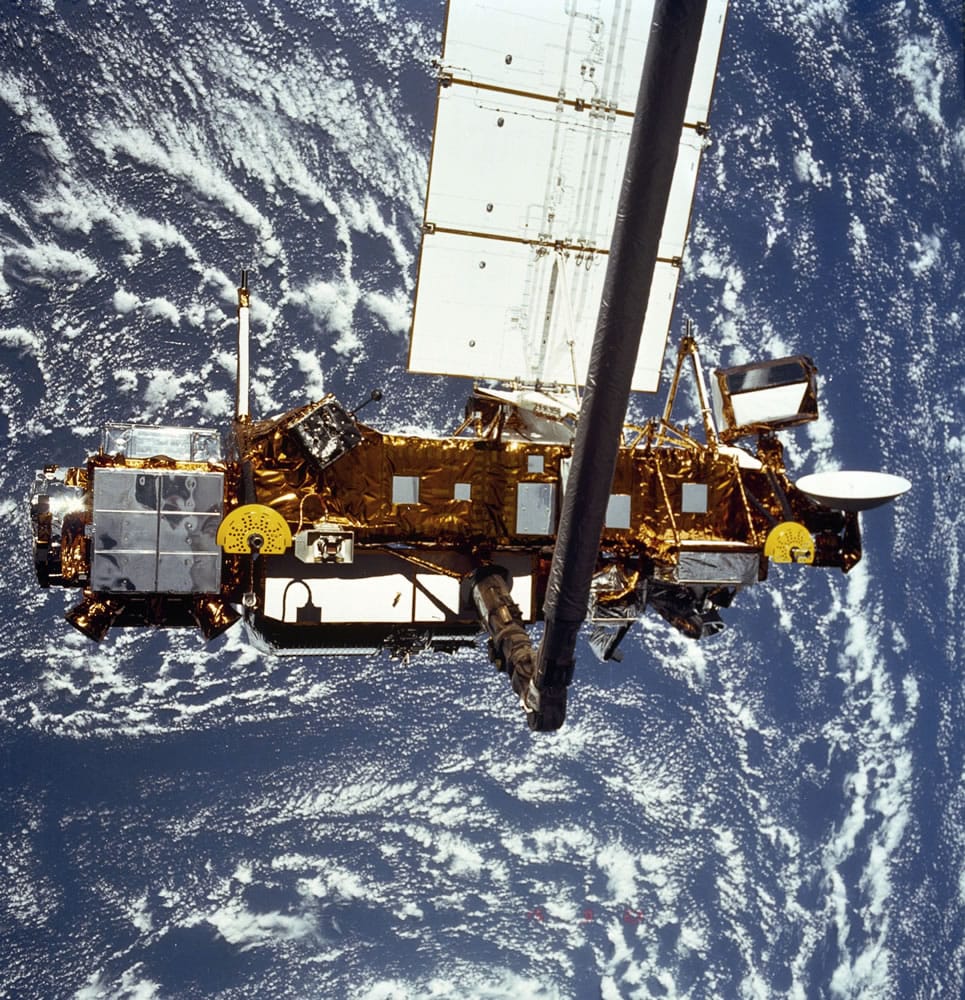CAPE CANAVERAL, Fla. — A 6-ton NASA satellite on a collision course with Earth apparently plunged to its demise late Friday, though NASA had yet to confirm where any debris landed.
The old research spacecraft was targeted to crash through the atmosphere sometime Friday night or early Saturday, putting Canada and Africa in the potential crosshairs, although most of the satellite was expected burn up during re-entry. The United States wasn’t entirely out of the woods; the possible strike zone skirted Washington state.
The satellite kept scientists guessing until the end, flipping positions in its low orbit.
“It just doesn’t want to come down,” Jonathan McDowell of the Harvard-Smithsonian Center for Astrophysics said Friday evening.
McDowell said the satellite’s delayed demise demonstrated how unreliable predictions can be. That said, “the best guess is that it will still splash in the ocean, just because there’s more ocean out there.”
Until Friday, increased solar activity was causing the atmosphere to expand and the 35-foot, bus-size satellite to free-fall more quickly. But late Friday morning, NASA said the sun was no longer the major factor in the rate of descent and that the satellite’s position, shape or both had changed by the time it slipped down to a 100-mile orbit.
“In the last 24 hours, something has happened to the spacecraft,” said NASA orbital debris scientist Mark Matney.
NASA stressed its predictions had almost all of the U.S. in the clear — with Washington state the lone holdout. In a Twitter post late Friday, NASA wrote, “If debris fell on land (and that’s still a BIG if), Canada is most likely area.”
Any surviving wreckage was expected to be limited to a 500-mile swath.
The Upper Atmosphere Research Satellite, or UARS, is the biggest NASA spacecraft to crash back to Earth, uncontrolled, since the post-Apollo 75-ton Skylab space station and the more than 10-ton Pegasus 2 satellite, both in 1979.
Russia’s 135-ton Mir space station slammed through the atmosphere in 2001, but it was a controlled dive into the Pacific.
Some 26 pieces of the UARS satellite — representing 1,200 pounds of heavy metal — were expected to rain down somewhere. The biggest surviving chunk was to be no more than 300 pounds.
Earthlings can take comfort in the fact that no one has ever been hurt by falling space junk — to anyone’s knowledge — and there has been no serious property damage. NASA put the chances that somebody somewhere on Earth would get hurt at 1-in-3,200. But any one person’s odds of being struck were estimated at 1-in-22 trillion, given there are 7 billion people on the planet.
“Keep in mind that we have bits of debris re-entering the atmosphere every single day,” Matney said in brief remarks broadcast on NASA TV.
Any surviving wreckage belongs to NASA, and it is against the law to keep or sell even the smallest piece. There are no toxic chemicals on board, but sharp edges could be dangerous, so the space agency is warning the public to keep hands off and call police.
The $740 million UARS was launched in 1991 from space shuttle Discovery to study the atmosphere and the ozone layer. At the time, the rules weren’t as firm for safe satellite disposal; now a spacecraft must be built to burn up upon re-entry or have a motor to propel it into a much higher, long-term orbit.
NASA shut UARS down in 2005 after lowering its orbit to hurry its end. A potential satellite-retrieval mission was ruled out following the 2003 shuttle Columbia disaster, and NASA did not want the satellite hanging around orbit posing a debris hazard.
Space junk is a growing problem in low-Earth orbit. More than 20,000 pieces of debris at least 4 inches in diameter are being tracked on a daily basis. Those objects pose a serious threat to the International Space Station.



